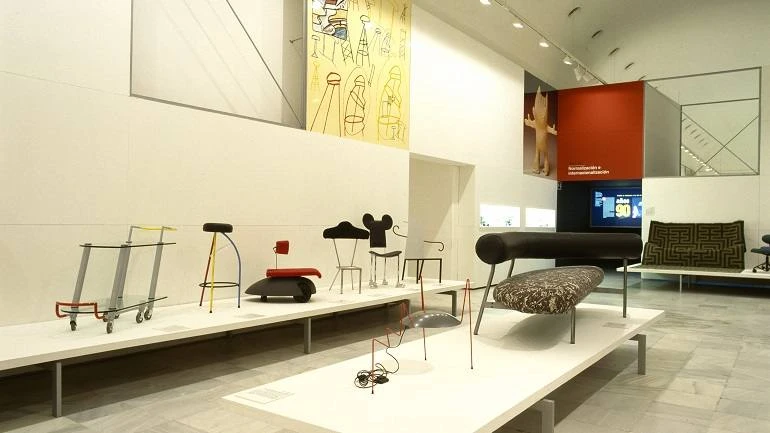Diseño industrial en España
This exhibition weaves a historical narrative based on the qualities of the products that have marked the history of the country, distinguished by their conceptual or material quality and which provide unknown or original answers. The exhibition gathers a selection of 350 pieces, arranged in chronological order and includes some thematic attachments (street furniture, large vehicles or the limit with art) added with the intention of avoiding a simple presentation of a repertoire.
The chronology, which in turn gives structure to the tour and the museographical design, is divided into five stages: Background and prototypes (1900-1929), First ideas (1930-1959), Birth and Development (1960-1979), the Spanish design boom (1980-1989) and Standardisation and Internationalisation (the 90s). In this way a continuity of names and works are established which start with Antonio Gaudí and the practice of traditional design. The next phase is constituted by the Thirties, with the independence of the manufacturing process as industrial design, full of conceptual and aesthetic influence that comes from the European avant-garde and the International Modernism. The GATEPAC (Group of Spanish Artists and Technicians for the Progress of Contemporary Architecture) is the main promoter of modern design ideas and creativity: different acenues such as AC Magazine, the store MIDVA (Mobles i decoració per a la vivenda actual) (Furniture and decor for today’s home) and serves as an example for industry and manufacturers.
The formalisation of design starts in Spain in the second half of the Fifties, thanks to a favourable economic outlook after the end of autarky, as well as by the existence of a group of mobilisers aware of the importance of industry. It is the moment for SEDI (Society of Industrial Design Studies, Madrid, 1957) and IDIB (Institute of Industrial Design in Barcelona, 1957) -which becomes FAD (Foment de les Arts i disseny) (Promotion of the Arts and design) and ADI FAD (Associació de Disney industrial) (Association of Industrial design) and later, the Industrial Design Group- where there is a confluence of leading architects, designers and industrialists from that time. Elisava (Barcelona, 1961) is also established, the first school in Spain dedicated to industrial design, and which becomes Eina School in 1967. After years of experimentation in the 1970s and certain excesses in the 1980s; during the Nineties, industry looks for an element of differentiation, based on ingenuity and thrift, with a minimalist and traditional aesthetic. As a counterpoint, the exhibition or experimental design took refuge in artistic fields. In this respect, the exhibition also includes a section dedicated to non-industrial designs created by artists, which show the close relationship between art and design.
Artists
Museu de les Arts Decoratives, Barcelona (October 28, 1998 - January 10, 1999); Centro Andaluz de Arte Contemporáneo, Sevilla (May 20 - August 31, 1999)
Organised by
Museo Nacional Centro de Arte Reina Sofía and Dirección General de Industria, Ministerio de Industria y Energía
Image gallery



Itinerary
Museo Nacional Centro de Arte Reina Sofía, Madrid
13 May, 1998 - 31 August, 1998
Museu de les Arts Decoratives, Barcelona
28 October, 1998 - 10 January, 1999
Centro Andaluz de Arte Contemporáneo, Sevilla
20 May, 1999 - 31 August, 1999
